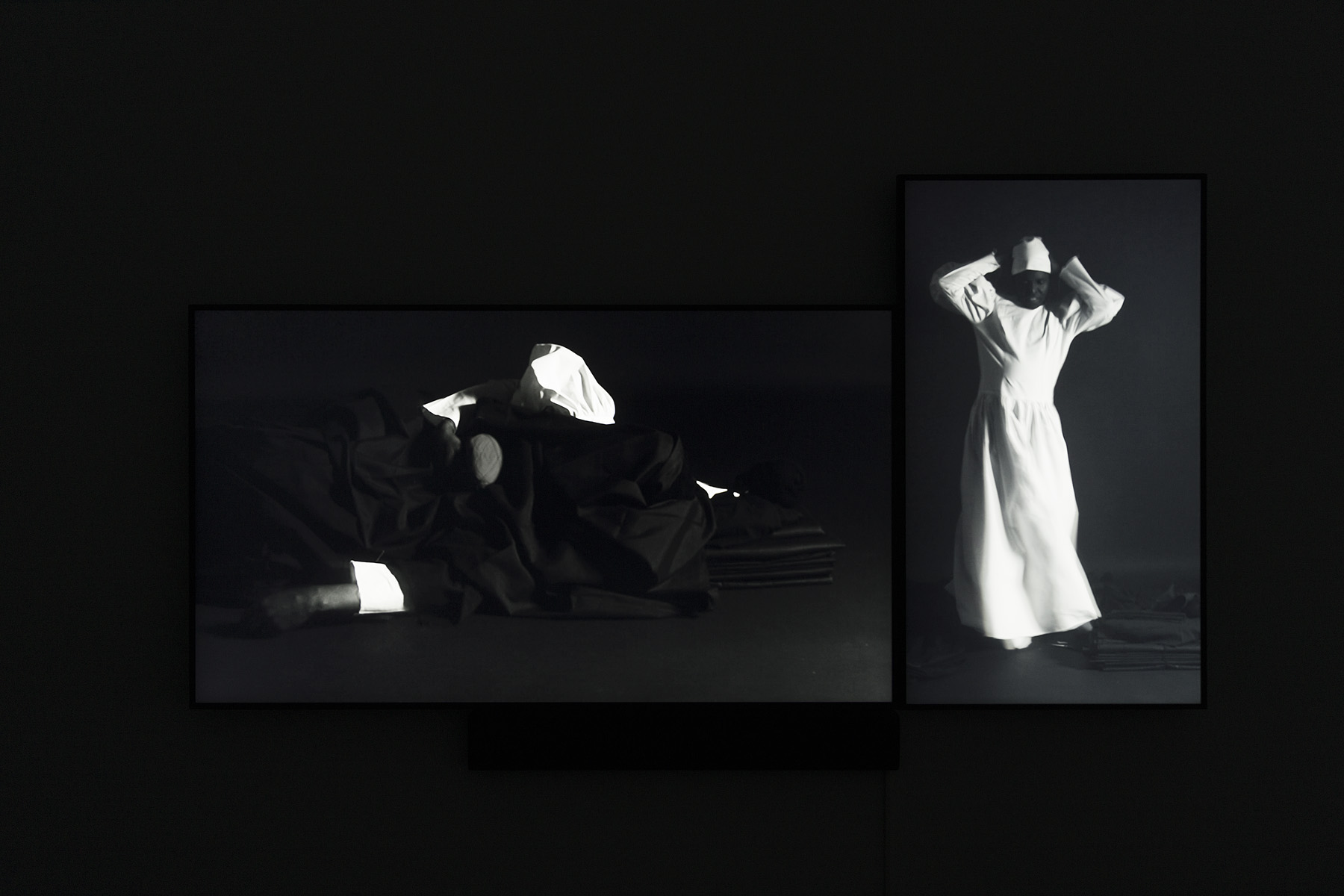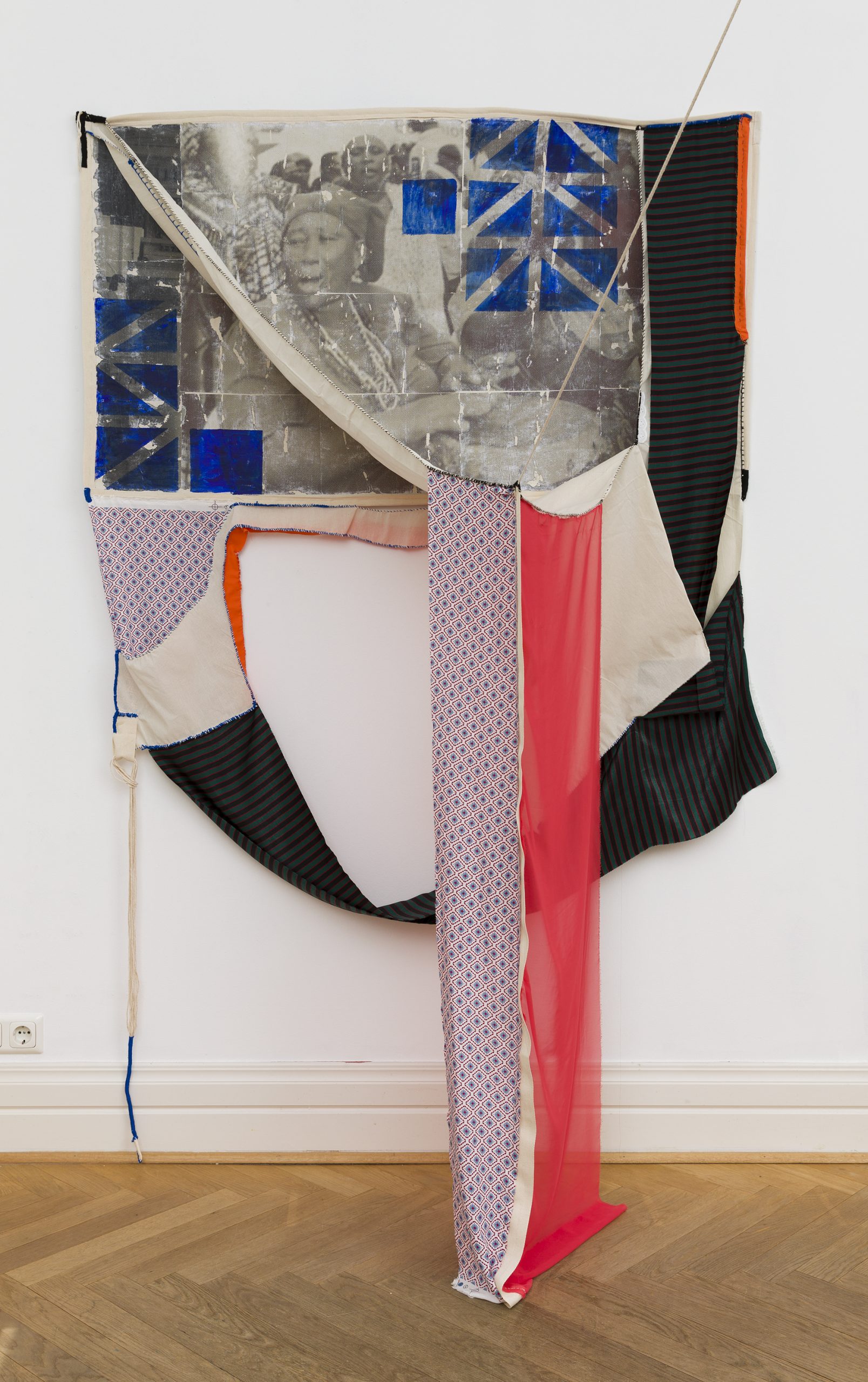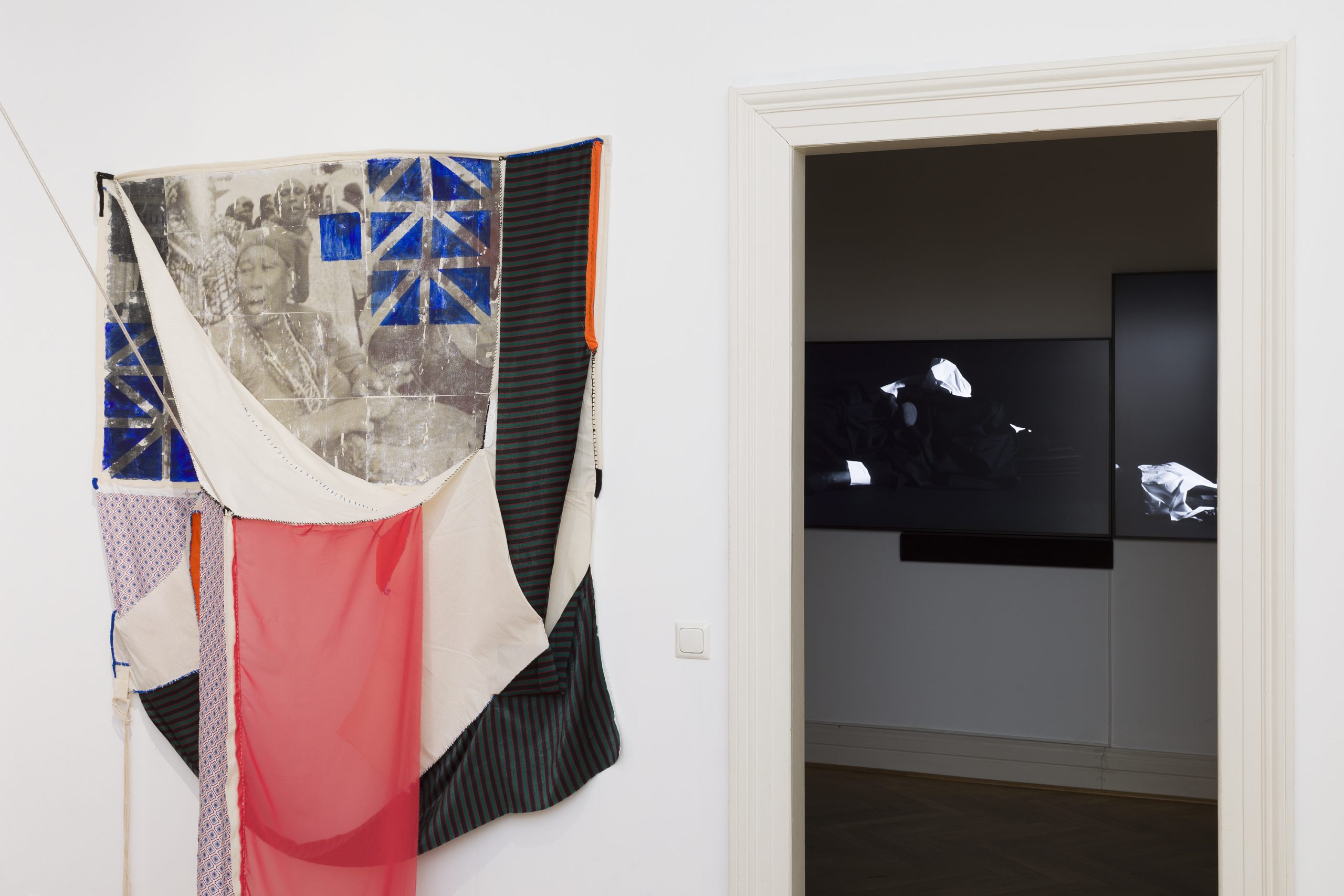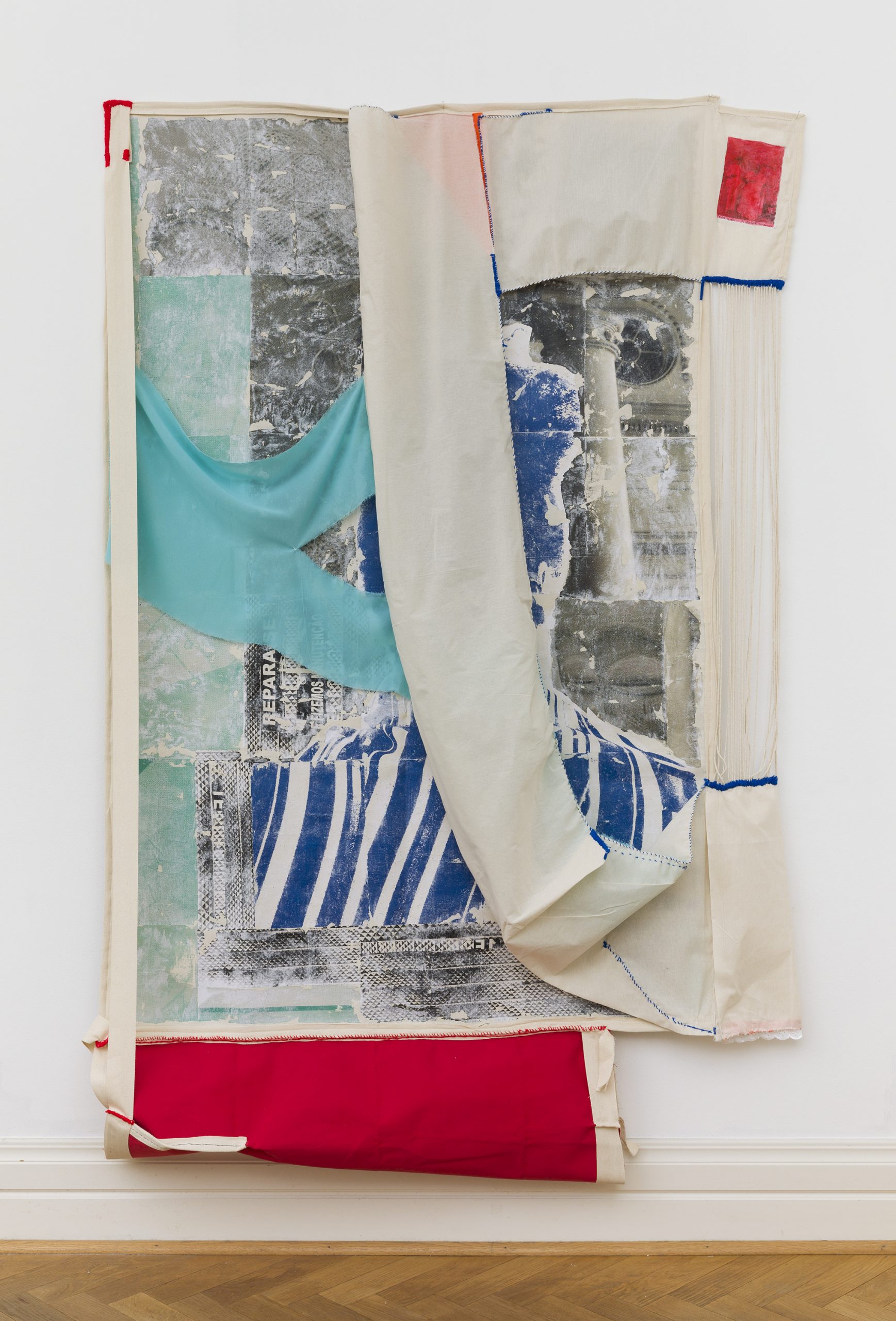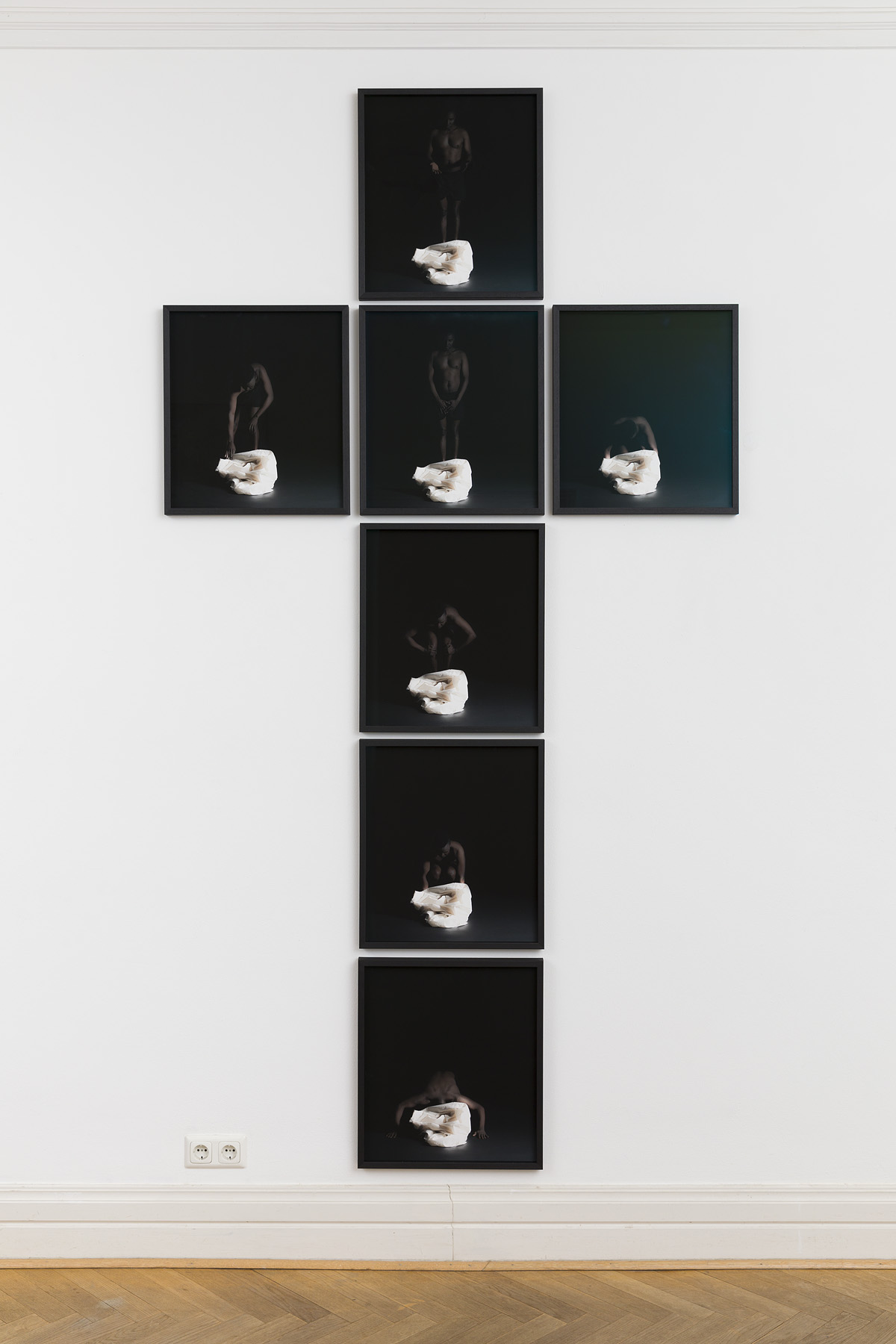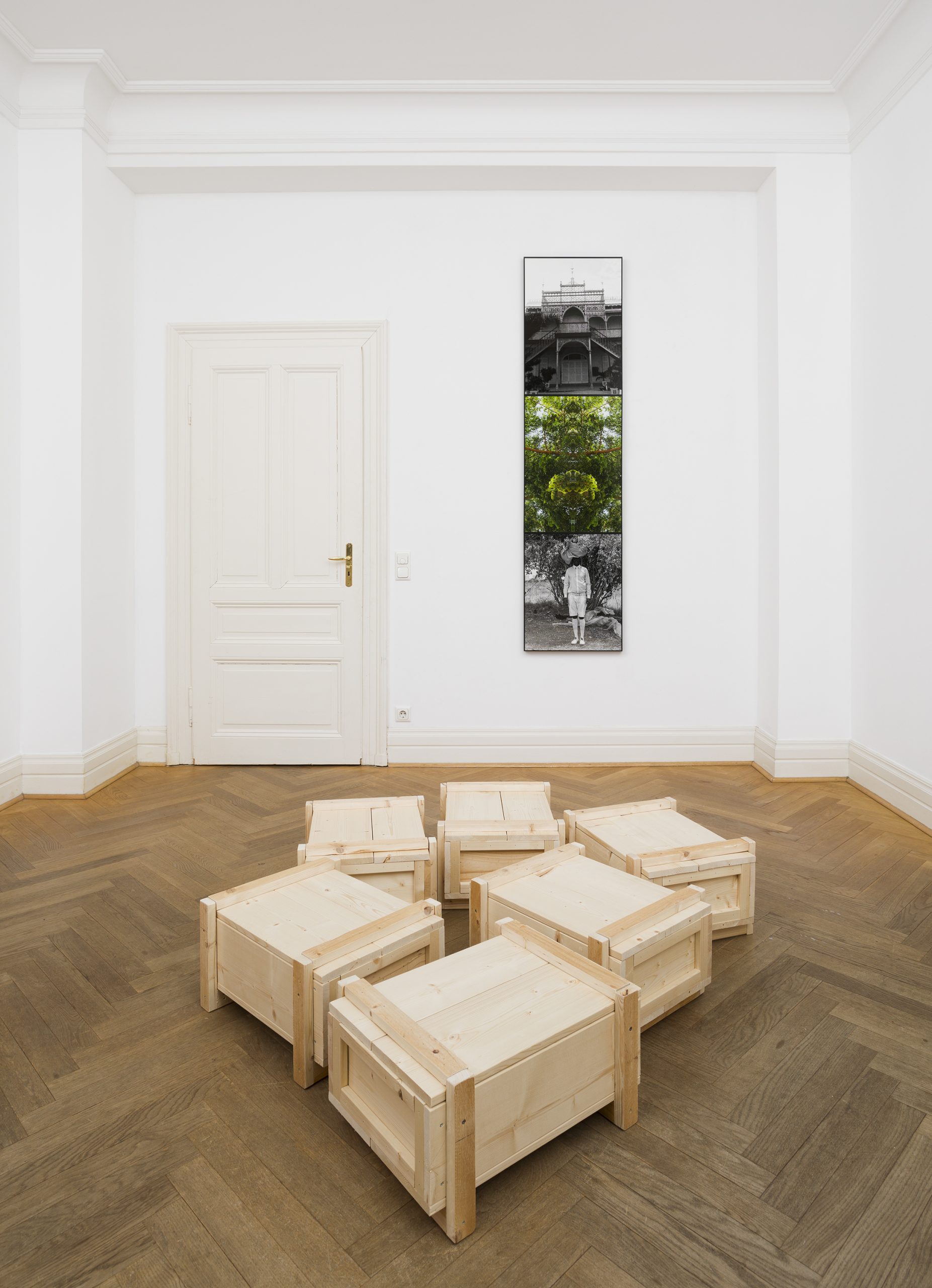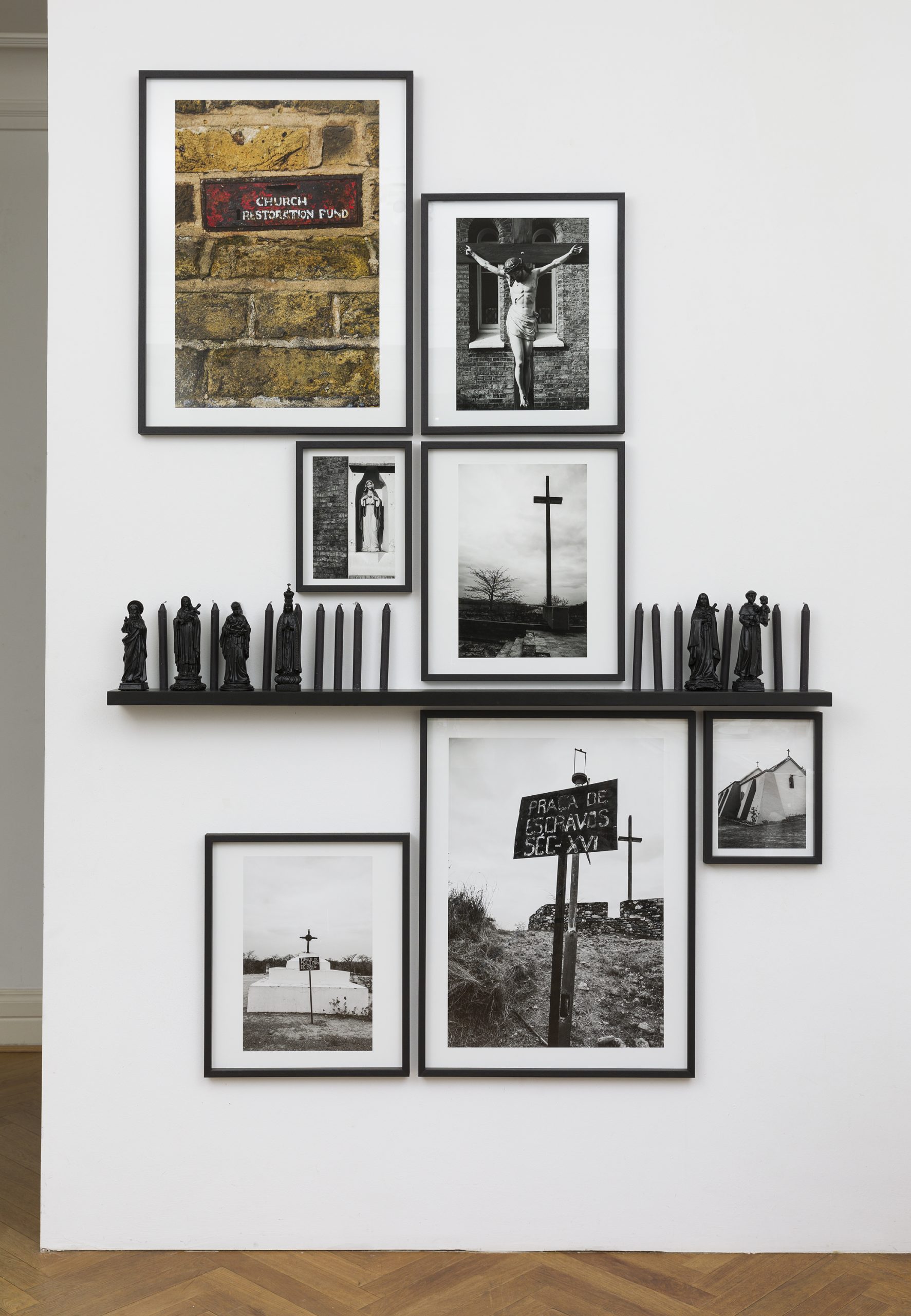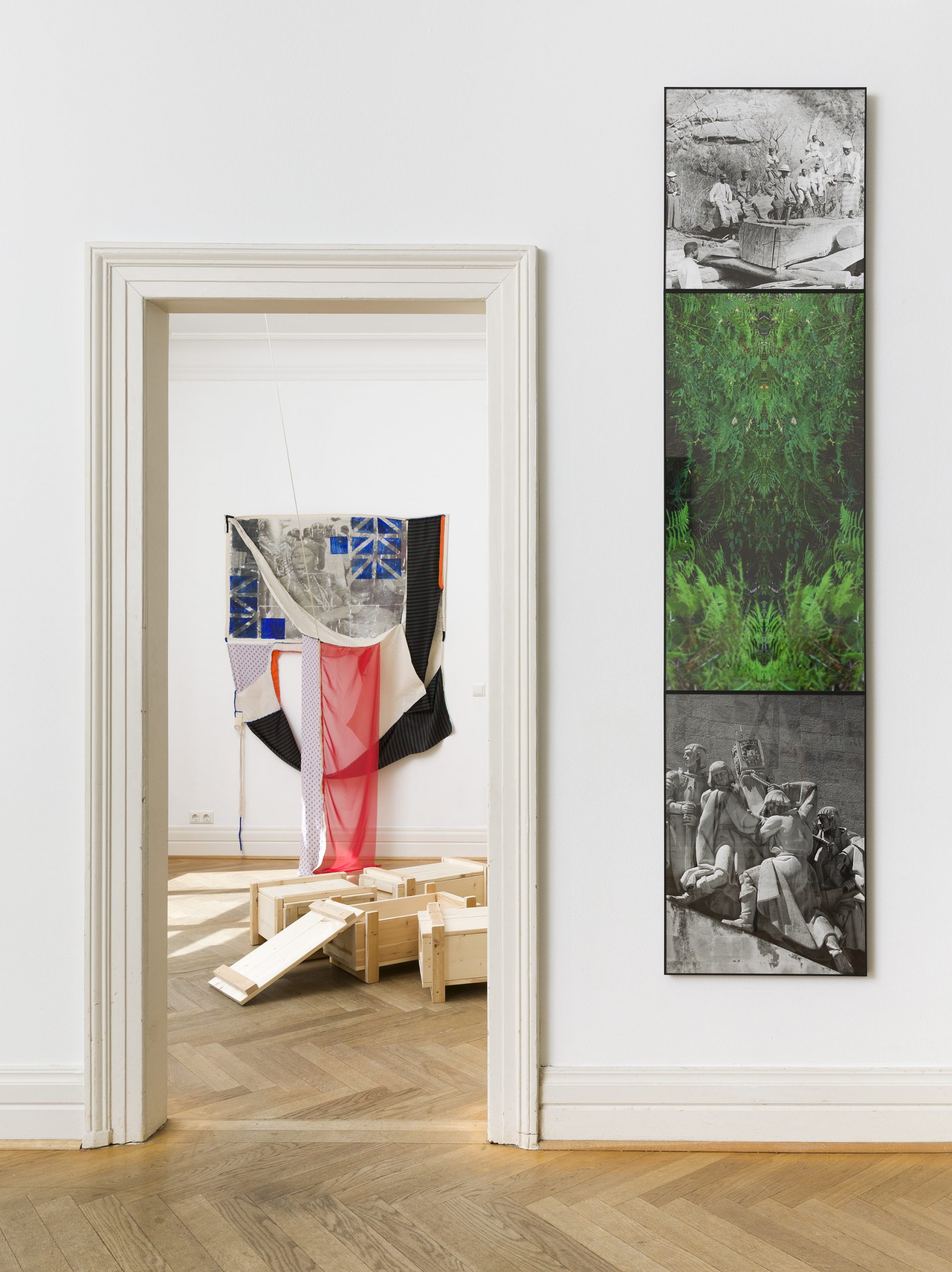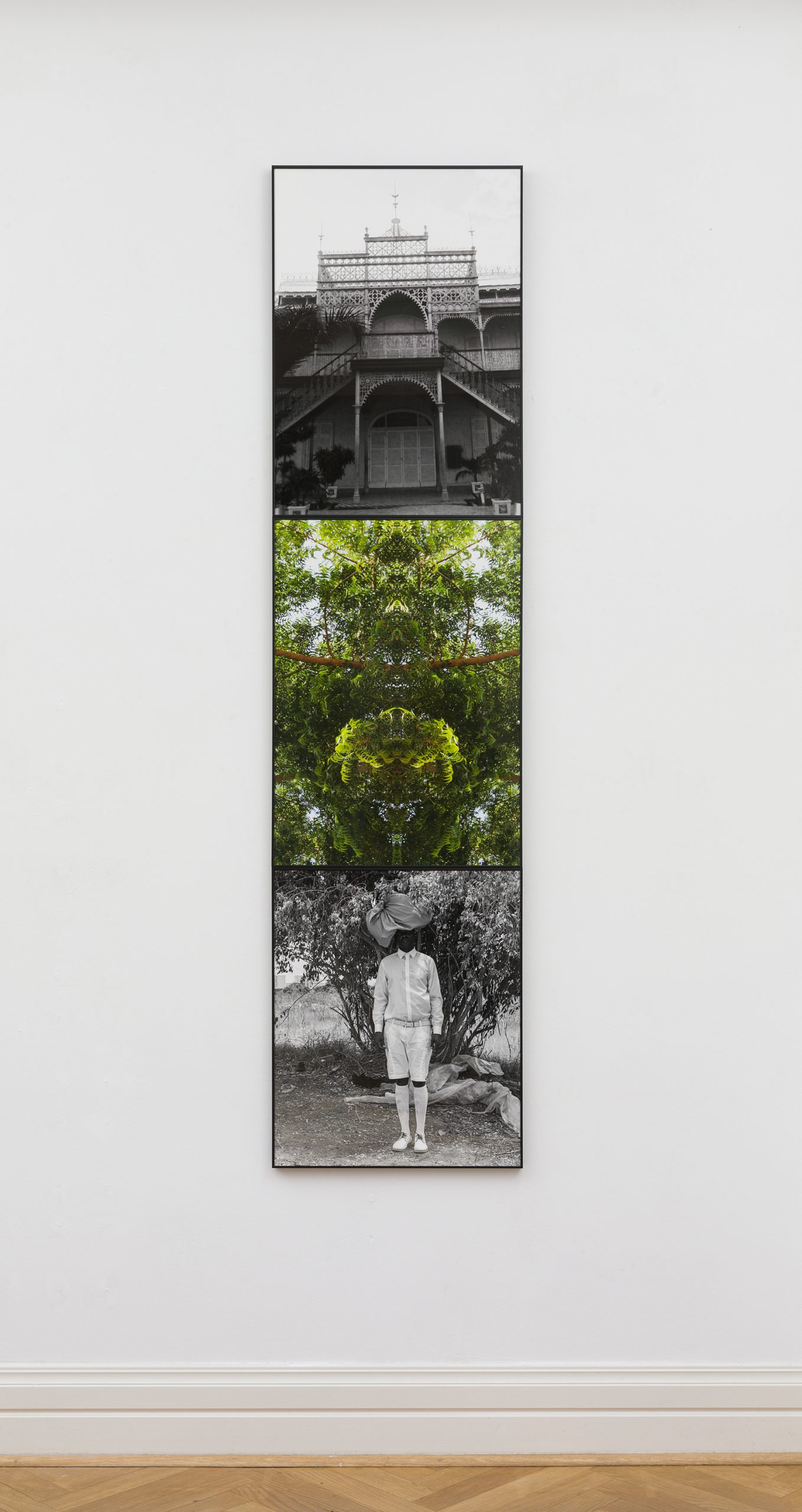Angolan artist Januário Jano is currently showing at Jean-Claude Maier Gallery in Frankfurt. Titled ‘Arquivo Mestre’ and his first solo presentation in Germany, the exhibition features photography and video installations, large-scale textile works and performances. Memory and cultural identity are themes central to Jano’s creative process. In most of his works, he merges traditional Ambundu practices of the Bantu people in Angola with pop-cultural elements. He offers a combined experience of aesthetics and profundity to his viewers who are invited to a deeper exploration. His photographic works reveal traces of colonial violence, such as the symbolic Christian cross that served as a marker of successful missionary work but was used to displace indigenous cultural practices, traditions, and crafts.
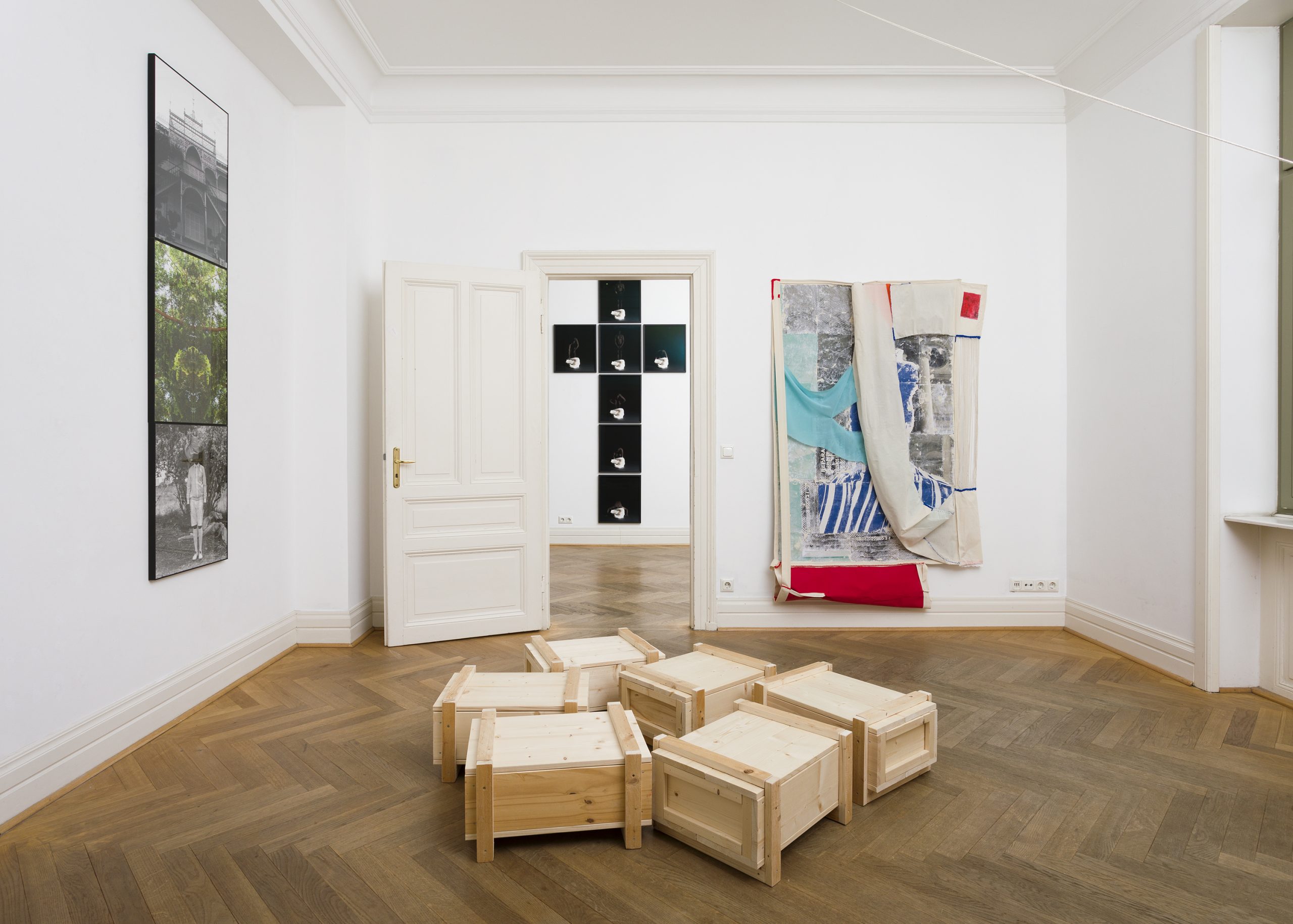
In ‘Arquivo Mestre’, the sound installation ‘Dusky Dorky – Looking for Dodo’ delves into the sound archive of the British Museum in London. With the sourced archives, the artist tells stories from the past, in this instance, the story of a Kazumbi, a spirit from another world, as it is known in the Ambundu’s traditional belief system.
‘Kazumbi’, the title of the video work in this exhibition, has Jano moving on the screens to rhythmic breathing sounds as if caught by a strange force. He wears a white dress, one that his grandmothers might have also worn back in colonial times. Not a traditional garment, but rather one in the fashion of the colonial rulers, reminiscent also of clerical garments. The clothing of the white man, of the white woman, was a first step in the process of cultural assimilation, a step away from one’s own narrative, from collective memory, away from the Mponda, as the belt-like cotton bags are called, in which Ambundu women preserved their stories.
His textile works appear to be an expansion of the space itself: lengths of fabric, pockets, bulges, patterns, printed shapes and photographs, colourful seams, and threads form an inverted Mponda. No linear narrative, but rather memory as it functions: entangled, jumping, dragging, meandering, sudden, constantly shifting with the overlapping of other narratives. The gallery describes the exhibition as “a new discovery, another clue to something previously hidden…”.
Through this exhibition, the Jean-Claude Maier Gallery contributes to highly topical debates in Europe on memory, the privilege of interpretation, multiperspectivity and cultural identity. How can the Global North live its responsibility in post-colonial times? To what extent does colonialism still affect global interactions today? And how might a coexistence on eye-level become conceivable?
Jano, born in 1979 in Luanda, Angola, graduated in 2020 with a Master of Fine Arts from Goldsmith University in London. He is currently based between Luanda, London and Lisbon. His multimedia practice includes painting, textile art, performance, sound and video art, and photography. In his work, pop cultural influences merge with traditional practices. However, the artist’s own body is always central and perceived as a link between the present and the past.
‘Arquivo Mestre’ is on view until August 14, 2021 at Jean-Claude Maier Gallery in Frankfurt am Main. It was curated by Mahret Ifeoma Kupka, an art scholar, freelance writer and, curator at the Museum Angewandte Kunst in Frankfurt am Main, Germany. In her exhibitions, lectures, moderations, writings and interdisciplinary projects, she addresses racism, memory culture, representation, and the decolonisation of art and cultural practices in Europe and on the African continent.
